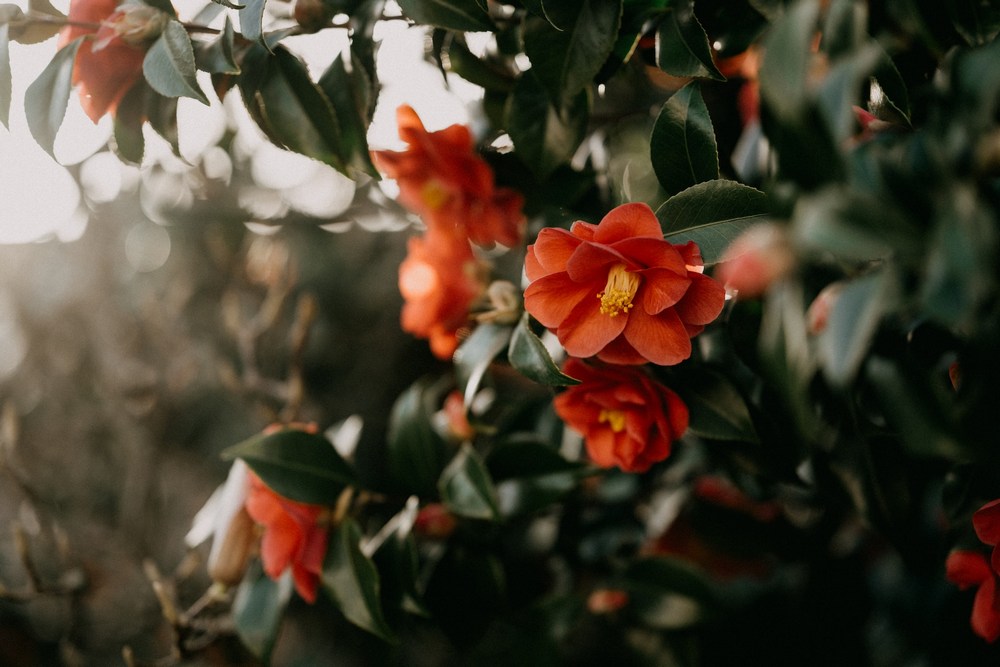Camellia Japonica, often revered as “The Queen of Winter Flowers”, holds a special place in the horticultural world. Its captivating blooms provide a splash of color during the dreary winter months, bringing life and vibrancy to gardens when most other plants are dormant. This article delves into the rich history, distinctive botanical features, cultivation techniques, and cultural significance of Camellia Japonica, offering readers a comprehensive understanding of this beloved winter flower.
The Historical Significance of Camellia Japonica
Camellia Japonica, known for its exquisite beauty, has a storied history that dates back centuries. Originating from East Asia, this plant has been cultivated in China and Japan for over a thousand years. In ancient China, the Camellia Japonica was a symbol of purity and longevity, often depicted in art and literature. Japanese culture also holds this flower in high esteem, where it is known as “Tsubaki.” The Japanese have bred numerous varieties, each more beautiful than the last, and the flower plays a significant role in traditional tea ceremonies and festivals.
European explorers first encountered Camellia Japonica in the 18th century, and it quickly became a sought-after plant in aristocratic gardens. Its introduction to Europe sparked a horticultural craze, leading to the development of countless cultivars. Today, the historical significance of Camellia Japonica continues to grow as gardeners and enthusiasts around the world cherish its timeless elegance and beauty.
Botanical Characteristics and Varieties
The botanical characteristics of Camellia Japonica are as intriguing as its history. This evergreen shrub can grow up to 20 feet tall, featuring glossy, dark green leaves that provide a perfect backdrop for its stunning flowers. The blooms come in a wide range of colors, including shades of red, pink, white, and even variegated patterns. Each flower typically has numerous petals, creating a full and lush appearance.
There are several popular varieties of Camellia Japonica, each with unique traits. Some of the most notable include:
- ‘Debutante’: Known for its large, light pink blooms that resemble peonies.
- ‘Nuccio’s Gem’: A favorite for its pure white, perfectly formed flowers.
- ‘Pink Perfection’: True to its name, this variety features delicate pink blossoms with a flawless shape.
These varieties, among many others, showcase the incredible diversity within the species. Gardeners often choose specific cultivars based on their preferred flower color, bloom time, and growth habit.
Cultivating Camellia Japonica in Your Garden
Growing Camellia Japonica in your garden can be a rewarding experience, but it requires attention to detail and proper care. Here are some essential tips for successful cultivation:
- Soil Requirements: Camellias prefer acidic, well-drained soil. Ensure the planting area has good drainage to prevent root rot.
- Light Conditions: These plants thrive in partial shade, as too much direct sunlight can scorch the leaves and reduce flowering.
- Watering Needs: Keep the soil consistently moist but not waterlogged. Mulching around the base can help retain moisture and regulate soil temperature.
- Pruning and Maintenance: Regular pruning helps maintain the plant’s shape and encourages more prolific blooming. Remove any dead or diseased branches to promote healthy growth.
By following these guidelines, gardeners can enjoy the stunning beauty of Camellia Japonica throughout the winter and beyond. The effort put into caring for these plants is well worth the reward of their spectacular blooms.
The Cultural Impact and Symbolism of Camellia Japonica
Camellia Japonica holds deep cultural significance in various societies around the world. In Japan, the flower symbolizes the coming of spring and is often associated with the samurai, representing strength and beauty. It also appears in Japanese art, literature, and even fashion, illustrating its pervasive influence on culture.
In Victorian England, Camellia Japonica was a symbol of admiration and perfection. It was commonly given as a gift to express romantic interest and admiration. The flower’s elegant appearance and winter blooming cycle made it a popular choice for ornamental gardens and floral arrangements.
Modern culture continues to embrace the symbolism of Camellia Japonica. In literature and film, it often represents themes of love, beauty, and resilience. The flower’s enduring popularity speaks to its universal appeal and the timeless qualities it embodies.
In conclusion, Camellia Japonica: The Queen of Winter Flowers is not just a botanical marvel but a cultural icon that has captivated the hearts of people around the world. Its rich history, diverse varieties, and symbolic meanings make it a cherished plant in gardens and hearts alike.









